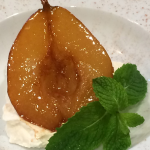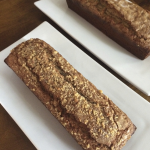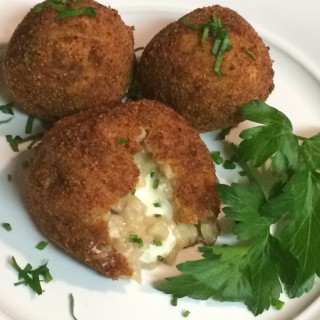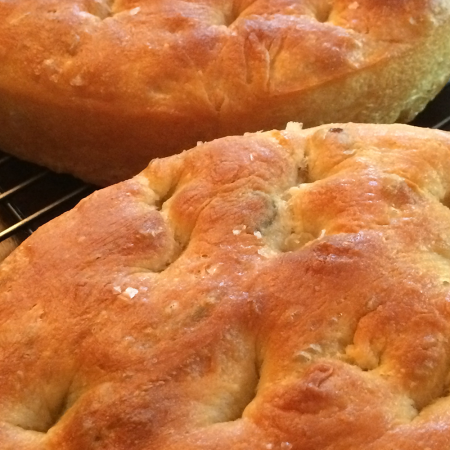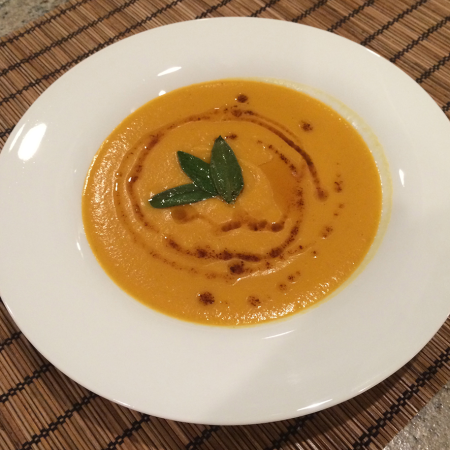When I married my husband, I welcomed two stepdaughters aged eight and thirteen into my life. At the time, I completely underestimated the degree of difficulty in blending a family – the craft takes an incredible amount of love, patience and time. Some weeks yield better results than others, some years more success than others; with a good dash of creativity, you develop a recipe that promotes happiness and joy. To succeed in the challenge, I leaned on my one of my passions – cooking.
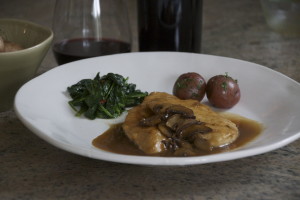 For any family, some of the most delightful moments happen while preparing meals and dining together; for a blended family, these moments carry an even greater weight. Every other Thursday night was an important night when the girls were young and Chicken Marsala became a regular dish served at our family table because it was a favorite of my younger stepdaughter. In the beginning, the ingredients used were simplified to expedite the process – thin sliced chicken bought from the market, pre-sliced mushrooms and powdered spices. But, as their knife skills improved so did our recipe. We sliced our own whole chicken breasts and then pounded them thin; powdered onion and garlic were replaced with diced shallots and smashed garlic cloves; cremini were chosen over button mushrooms and carefully sliced paper-thin to enhance the browning.
For any family, some of the most delightful moments happen while preparing meals and dining together; for a blended family, these moments carry an even greater weight. Every other Thursday night was an important night when the girls were young and Chicken Marsala became a regular dish served at our family table because it was a favorite of my younger stepdaughter. In the beginning, the ingredients used were simplified to expedite the process – thin sliced chicken bought from the market, pre-sliced mushrooms and powdered spices. But, as their knife skills improved so did our recipe. We sliced our own whole chicken breasts and then pounded them thin; powdered onion and garlic were replaced with diced shallots and smashed garlic cloves; cremini were chosen over button mushrooms and carefully sliced paper-thin to enhance the browning.
Of course, the essence of the dish is Marsala, a fortified wine made in Sicily. Sicily is Italy’s largest island situated in the southern Mediterranean at the tip of Italy’s boot. Marsala is a fortified wine that has been stabilized by the addition of brandy; it has a higher alcohol content that table wine (around 18% or higher). Authentic Marsala is made from local Sicilian white grapes including Grillo, Inzolio, and Cataratto and then fortified with grape brandy to stop the wine’s fermentation. Depending on the desired sweetness or dryness of the wine, the fortification happens when the wine reaches specified levels of residual sugar: Dolce (sweet), Semi Secco (semi-dry) and Secco (dry). Florio, Lombardo, Marco De Bartoli and Pelligrino are brands you will find at the local wine store or in the wine section of your supermarket.*
We use dry Florio Fine Marsala to finish our family dish. First, the thin-sliced chicken is pounded to tenderize it, seasoned with white pepper and salt and then dredged in flour. Working in batches, we sauté the chicken in butter and oil until the edges crisp and turn a lovely caramel brown. A key in getting this dish right is keeping the pan hot enough to brown the chicken without burning the butter. In the same pan we use to cook the chicken, we add a little more butter and oil, increase the heat and then add the mushrooms allowing them to juice and brown before stirring. When nicely browned but not yet fully dry, we had the shallots and crushed garlic cloves, stir 30 seconds, return the chicken to the pan and deglaze it with the Marsala. Add enough Marsala to almost cover the chicken, lower the cooking flame and allow the wine to reduce 10-15 minutes until the liquid lightly coats a spoon. Season and serve.
Reflecting on our Chicken Marsala, I am struck by the synergies in this dish that made it a fitting choice for our family blending. The dish was not in the extensive lexicon I brought to my new family kitchen; it is one the girls and I prepared 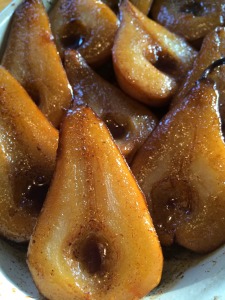 over and over again customizing it together. The dish evolved over the years developing with their tastes as well as those of their two sisters who came along with the years. Lately, I have been serving this dish with Sandy Potatoes – a side dish discovered on a recent trip to Southern Italy where I also tried and loved pears baked in sweet Marsala and served with fresh ricotta sweetened with sugar and vanilla.
over and over again customizing it together. The dish evolved over the years developing with their tastes as well as those of their two sisters who came along with the years. Lately, I have been serving this dish with Sandy Potatoes – a side dish discovered on a recent trip to Southern Italy where I also tried and loved pears baked in sweet Marsala and served with fresh ricotta sweetened with sugar and vanilla.
Fortified Wine
Marsala is known is this country primarily as a cooking wine but it was not always so; higher quality sipping Marsala, like Sherry and Madeira, once had the widespread popularity Port still enjoys today. Fortified wine gained popularity in the 1700 and 1800’s for two reasons: 1) its sweetness appealed to the general palate of the times and 2) it shipped more easily than still wine (table wine). Each of the fortified wines has it’s own fascinating political and social history. Port became popular in England following the Methuen Treaty of 1703 between Portugal and England – cut off from French wine by war with that nation, English merchants capitalized on shipping Port to England at a reduced tariff. Port’s popularity had an adverse effect on one of the world’s oldest and most popular wines – Sherry. When demand for the Spanish wine fell due to Port’s rise, Sherry producers improvised by bottling only portions of the Sherry aging in their barrels and topped the barrels off with young wine. This practice of “fractional blending” ultimately lead to the development of the solera method used today to produce the style of Sherry we know. Madeira was a happy accident: an unsold barrel of wine from the Island of Madeira that cooked in the belly of the ship and made a round-trip from the New World led local producers to realize that the wine arriving in the New World was not the same wine they had shipped! The wine makers liked the product innovation so they set about recreating the cooking and aging process, known today as estufagem or canterio.
